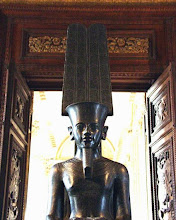Exploding comets and size
"Formerly, the sun was the largest object in the Solar System," says University of Hawaii astronomer David Jewett. "Now, Comet 17P/Holmes holds that distinction." On Nov. 9th, a team of Hawaii astronomers led by Rachel Stevenson measured the diameter of the comet's expanding debris cloud: 1.4 million kilometers, slightly larger than the sun itself.
 This composite image prepared by Jewett shows a Nov. 9th photo of the comet beside the sun and Saturn for scale. To photograph the comet, Stevenson et al used the 3.6 meter Canada-France-Hawaii Telescope atop Mauna Kea, "one of the few professional instruments still capable of capturing the whole comet in one image," notes Jewett.
This composite image prepared by Jewett shows a Nov. 9th photo of the comet beside the sun and Saturn for scale. To photograph the comet, Stevenson et al used the 3.6 meter Canada-France-Hawaii Telescope atop Mauna Kea, "one of the few professional instruments still capable of capturing the whole comet in one image," notes Jewett.Comet Holmes exploded on Oct. 23th and it has been expanding ever since. How big will it get? See for yourself. The comet is visible to the naked eye as a fuzzball in the constellation Perseus. With only a backyard telescope you can see the comet's debris cloud in crisp detail and watch it expand from night to night. Nov. 19th is a good night to look: The comet will glide by the star Mirfak (alpha Persei) and appear to swallow it--a sight not to be missed.






